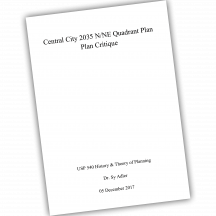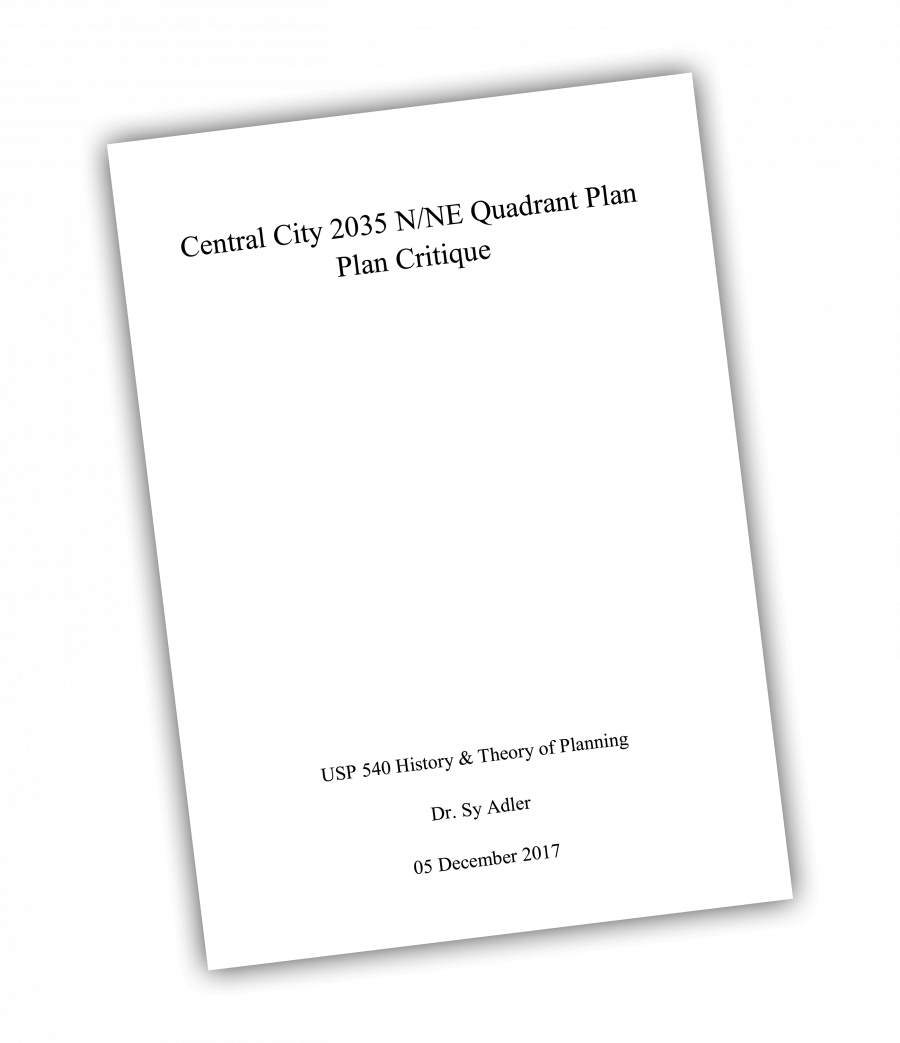
Subarea Planning
Freeway Planning
It was my first term of grad school. In USP-540: History & Theory of Planning, taught by Dr. Sy Adler, we formed groups to do a deep dive into a recently developed plan. Our group coalesced around Portland’s 2035 N/NE Quadrant Plan (2012), a subarea plan to further refine concepts from the Central City 2035 Concept Plan (2012). [See more about Portland's Central City 2035 planning efforts.]
One of the deliverables for our group project was a critique of the plan. It seems somewhat unfair for us, a bunch of young and idealistic students with no experience or accountability, to critique a plan that took years and many talented professionals to develop. But critique is exactly what we did. We considered the planning process and the outcome of the plan. Our critique culminated from months of study, including reading up on the context and history, and interviewing those involved with the planning process. We focused on the transportation element of the plan, which — due to the context of the project area and the nature of funding opportunities in the US (highway mega projects tend to find funding, even while agencies are too cash strapped to implement smaller, arguably more beneficial improvements) — was central to the plan.
I was fortunate to be in a group with four other brilliant and collaborative students. My role focused on studying and composing the pros and cons of the I-5 freeway investment detailed in the plan.
I-5 cuts through this central part of the city, and the N/NE Quadrant Plan includes plans to widen this urban segment of freeway. Our critique finds that investing massive sums of money (which was questionably estimated at $500 million at the time, though that number is now estimated to be much higher) in an urban freeway is counter to the City's stated goals and would do more harm than good for the city. This investment would be a signal by lawmakers that the preferred mode of transportation is driving, and encourages more traffic, traffic violence, pollution, and carbon emissions. It also perpetuates the original social injustice inflicted from constructing an interstate through historically Black neighborhoods, displacing hundreds of families and pumping pollution and noise into now disconnected neighborhoods. There were missed opportunities for the planning process to consider alternatives that would improve transportation in the project area without widening the freeway or deepening the wounds from the original highway construction.
The I-5 widening included in the N/NE Quadrant Plant persists today as the controversial I-5 Rose Quarter Project.
Read the plan that we critiqued here: Central City 2035 N/NE Quadrant Plan (2012)
Read the critique here: Plan Critique: Central City 2035 N/NE Quadrant Plan
